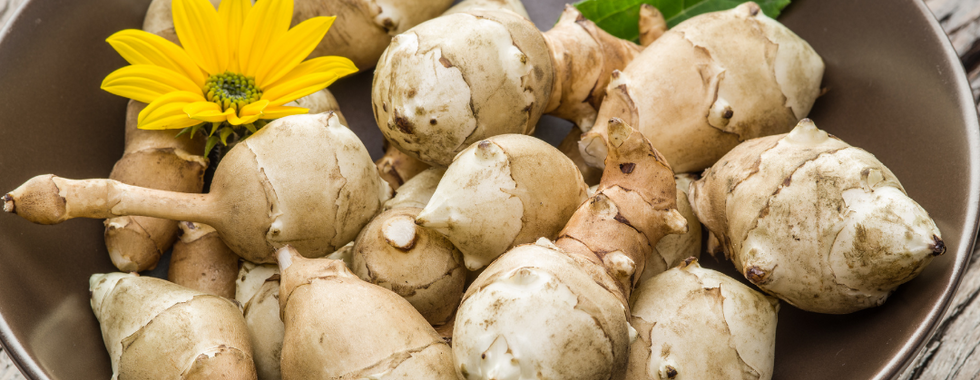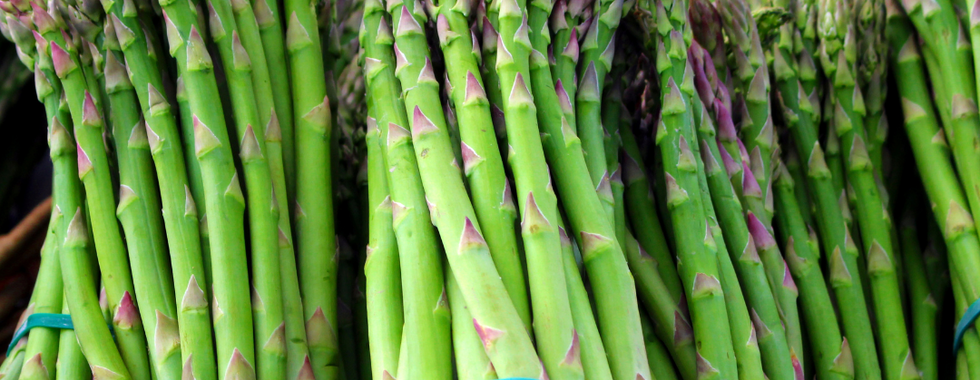Cultivating Gut Health
It's incredible that we live in a world where we can grow fiber-rich foods right in your backyard! Today, we're diving into the realm of prebiotics—those gut-friendly foods that nourish our beneficial bacteria and promote digestive wellness. I am going to discuss seven prebiotic-rich foods that not only thrive in the garden but also offer massive amounts of health benefits.
The Benefits of Prebiotic Foods:
Before we get into the garden goodies, let's talk about why prebiotic foods are such a powerhouse for gut health. Prebiotics are basically the fuel for the beneficial bacteria that live in our digestive system. By eating these fiber-rich foods, we're giving our gut microbiome the sustenance it needs to thrive. This, in turn, can lead to improved digestion, improved immunity, and better absorption of essential nutrients.
Growing Your Gut Health Garden:
1. Chicory Root:
- Chicory root is a great addition to any garden, offering not only a burst of beautiful foliage but also a rich source of inulin—a type of prebiotic fiber that supports gut health. To grow chicory, start by choosing a sunny spot with well-draining soil. Sow the seeds directly into the ground in early spring, lightly covering them with soil. Keep the soil moist until germination, which usually occurs within a week or two. As the plants grow, thin them to about 12 inches apart to give them room to develop their roots. Harvest the roots in the fall by digging them up carefully. To enjoy chicory root, peel and roast it for a delicious coffee substitute, or add it to soups and stews for a nutritious boost.
2. Jerusalem Artichokes (Sunchokes):
- These whimsical tubers are a gardening joy, producing tall, sunflower-like blooms and a huge yield of nutritious goodness below the soil. Plant Jerusalem artichokes in early spring in a sunny location with well-draining soil. Since they can grow quite tall, choose a spot where they won't shade out other plants. Sunchokes are easy to grow and require minimal maintenance, making them ideal for beginner gardeners. Harvest the tubers in the fall after the plants have died back. Simply dig them up and enjoy them roasted, mashed, or in soups and salads.
3. Dandelion Greens:
- Embrace the dandelion's hidden potential by growing its nutritious greens in your garden. These "weeds" are a treasure trove of vitamins, minerals, and inulin. Dandelions thrive in full sun to partial shade and well-draining soil. You can sow dandelion seeds directly into the ground in early spring or late summer. As the plants grow, harvest the leaves by cutting them close to the base. Young leaves are best for salads, while older leaves can be sautéed or added to soups. Be sure to choose dandelions from areas free of pesticides and chemicals.
- Who doesn't love the strong aroma of fresh garlic flowing through the garden? Not only does garlic add incredible flavor to dishes, but it also contains fructooligosaccharides (FOS), another prebiotic gem. To grow garlic, plant individual cloves in the fall, about 2 inches deep and 6 inches apart, in well-draining soil. Mulch the planting bed to protect the cloves during the winter months. In the spring, as the weather warms up, you'll see shoots emerging from the soil. Keep the garlic bed weed-free and well-watered throughout the growing season. Harvest the bulbs when the lower leaves turn yellow and begin to dry out. Hang them to cure for a few weeks in a cool, dry place before storing them.
5. Onions:
- From sweet Vidalias to pungent reds, onions are a staple in many gardens. These tasty bulbs are not just for cooking—they're also packed with inulin and FOS, making them a top choice for promoting gut health. To grow onions, start with sets (small bulbs) or onion seeds. Plant them in early spring in well-draining soil with plenty of organic matter. Onions prefer full sun and consistent moisture. As the plants grow, keep the soil moist but not waterlogged. Onions are ready to harvest when the tops turn yellow and start to flop over. Pull them up and allow them to dry in a warm, well-ventilated area before storing them.
6. Leeks:
- With their mild, onion-like flavor, leeks add a touch of elegance to any recipe. Grow these beauties in your garden to enjoy a fresh supply of prebiotic goodness. To grow leeks, start with seedlings or seeds sown indoors in early spring. Transplant the seedlings into the garden once the soil has warmed up. Leeks prefer rich, well-draining soil and full sun to partial shade. As they grow, mound soil around the base of the plants to blanch the stems. Harvest leeks when they reach the desired size by gently pulling them up from the ground. Rinse off any dirt and enjoy them in soups, stews, or sautéed dishes.
- Asparagus spears are a sure sign of spring, and they're also brimming with prebiotics. To grow asparagus, start with crowns (young plants) rather than seeds, as they establish more quickly. Plant the crowns in trenches about 6 inches deep and 12 inches apart in well-draining soil. Cover the crowns with a few inches of soil and gradually fill in the trenches as the plants grow. Asparagus plants are perennial, so they'll come back year after year with proper care. Harvest the spears when they're about 6-8 inches tall by cutting them at or just below the soil surface. Allow the plants to develop fern-like foliage after harvest to replenish their energy for the next season.
The Science Behind Prebiotics:
Now, let's dig a bit deeper into the science behind these prebiotic-rich foods and their impact on gut health. The fibers found in chicory root, Jerusalem artichokes, dandelion greens, garlic, onions, leeks, and asparagus—such as inulin, FOS, and resistant starch—act as a healthy meal for our gut bacteria.
When these fibers reach the large intestine, they undergo fermentation by our gut microbes. This fermentation process produces short-chain fatty acids (SCFAs), such as acetate, propionate, and butyrate. These SCFAs serve as an energy source for the cells lining our colon, helping to maintain a healthy gut barrier.
Butyrate, in particular, has been shown to have anti-inflammatory properties and may play a role in reducing the risk of colon cancer. Additionally, a balanced gut microbiome has been linked to improved digestion, strengthened immunity, and even benefits for mental health.
Research also suggests that a diverse and balanced gut microbiome is essential for overall health. By incorporating a variety of prebiotic-rich foods into our diets, we can promote the growth of different strains of beneficial bacteria, leading to a more robust microbiome.
Furthermore, prebiotic foods may help increase the production of certain vitamins, such as B vitamins and vitamin K, within the gut. This symbiotic relationship between our bodies and the microbes within us emphasizes the importance of nurturing our gut health with wholesome, fiber-rich foods. Here is one of my favorite recipes that is packed with fiber-rich foods.

Garlic and Leek Potato Soup
Ingredients:
- 4 leeks, white and light green parts only, thinly sliced
- 4 cloves garlic, minced
- 4 cups vegetable broth
- 4 cups diced potatoes
- 1/2 cup heavy cream (optional)
- Salt and pepper to taste
- Fresh chives for garnish
Instructions:
1. In a large pot, sauté leeks and garlic in olive oil until softened.
2. Add vegetable broth and diced potatoes to the pot. Bring to a boil, then reduce heat and simmer until potatoes are tender.
3. Use an immersion blender to blend the soup until smooth. Alternatively, you can blend in batches in a regular blender, being careful with the hot liquid.
4. Stir in heavy cream, if desired, for added richness. Season with salt and pepper to taste.
5. Serve hot, garnished with fresh chives. This creamy, comforting soup is a delightful way to enjoy the flavors of your garden harvest.
There you have it:
As you manage your garden, remember that you're not just growing vegetables—you're growing a thriving ecosystem within your own backyard. By incorporating prebiotic-rich foods like chicory root, Jerusalem artichokes, dandelion greens, garlic, onions, leeks, and asparagus, you're nourishing your gut microbiome and reaping the rewards of improved digestion and overall well-being.
From the earthy sweetness of roasted Jerusalem artichokes to the savory comfort of garlic and leek potato soup, there are endless ways to enjoy the flavors of your garden harvest. So, roll up your sleeves, dig into the earth, and savor the garden goodness that supports your gut health from the ground up!




















Comments